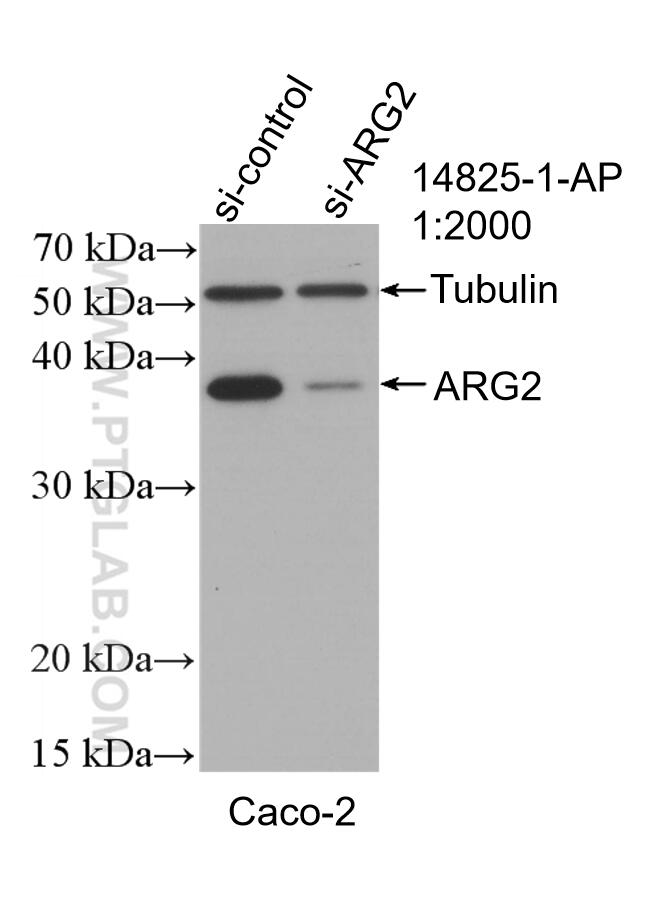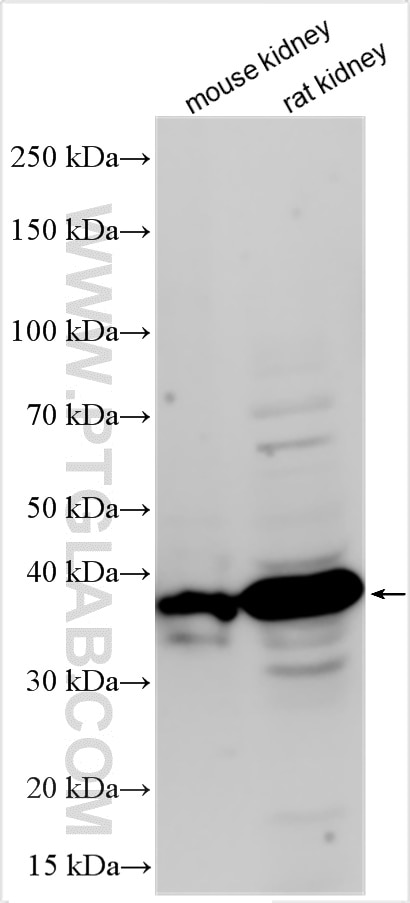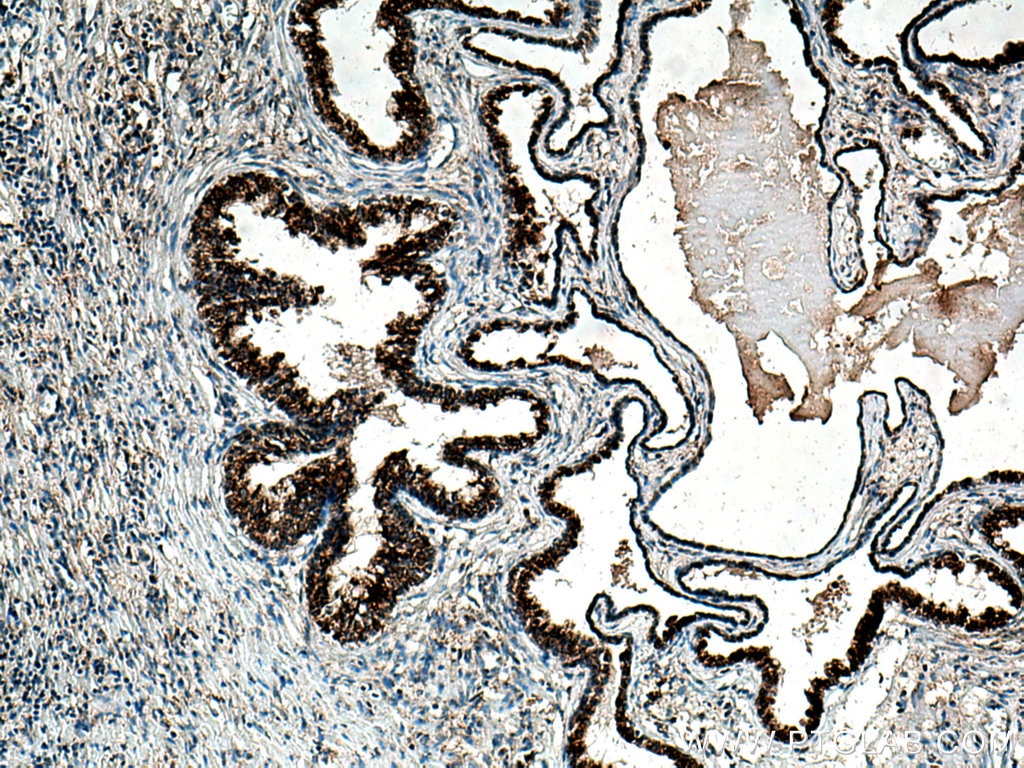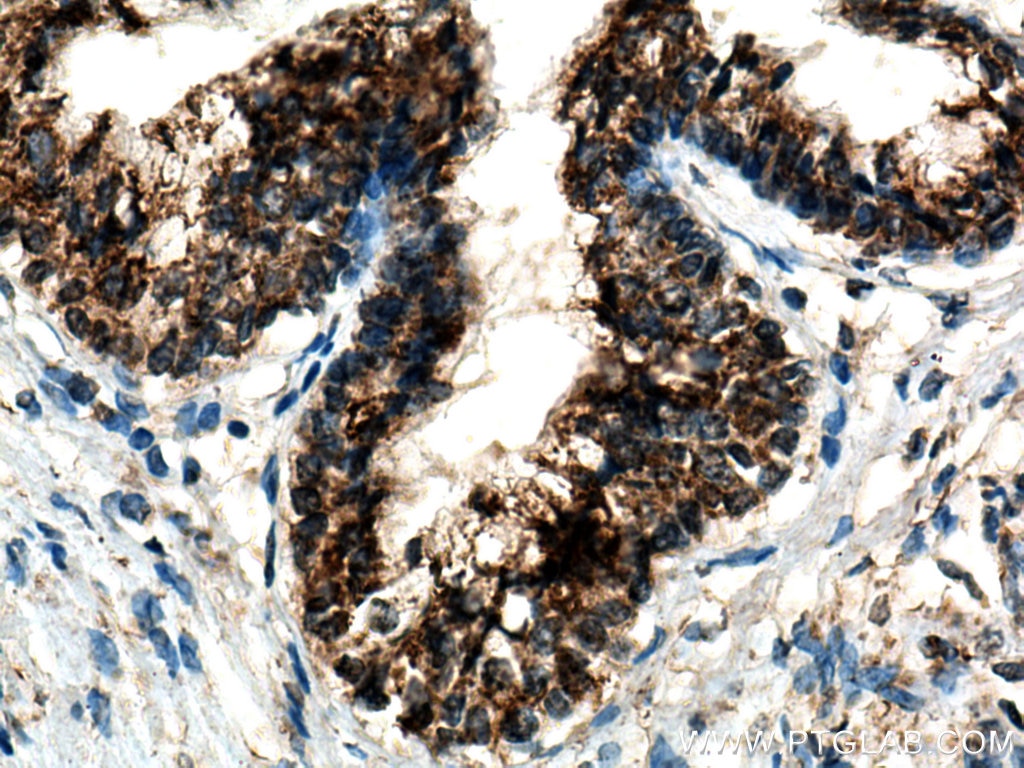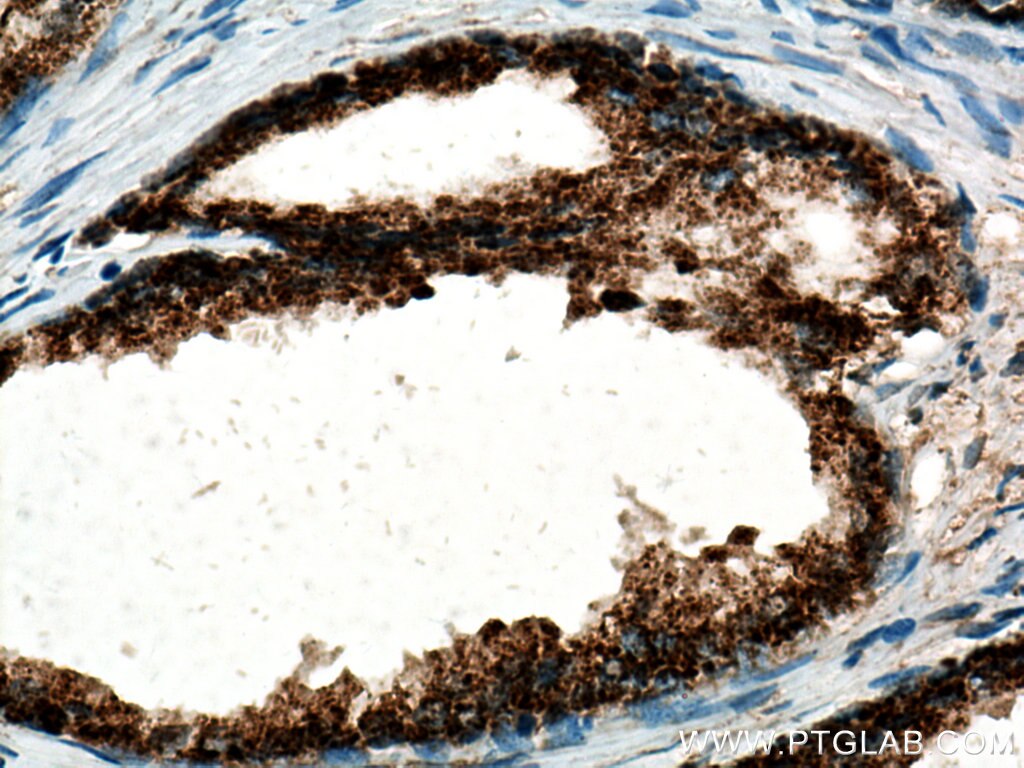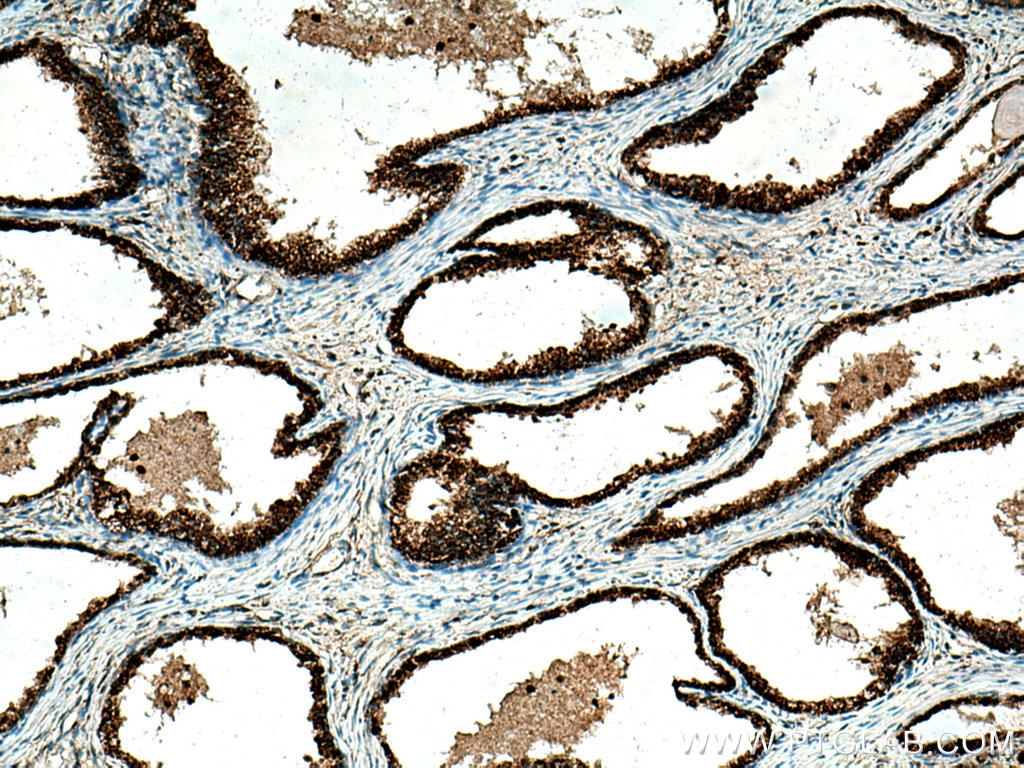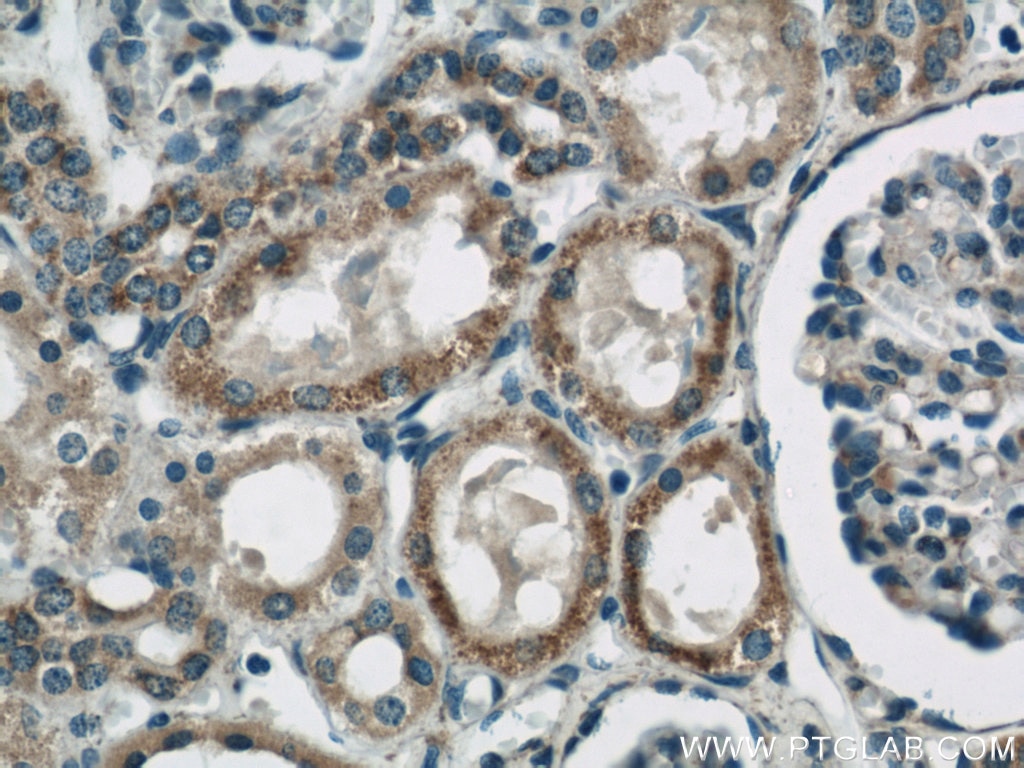- Featured Product
- KD/KO Validated
Arginase-2 Polyklonaler Antikörper
Arginase-2 Polyklonal Antikörper für WB, IHC, ELISA
Wirt / Isotyp
Kaninchen / IgG
Getestete Reaktivität
human, Maus, Ratte
Anwendung
WB, IHC, IF, ELISA
Konjugation
Unkonjugiert
Kat-Nr. : 14825-1-AP
Synonyme
Geprüfte Anwendungen
| Erfolgreiche Detektion in WB | Caco-2-Zellen, Mausnierengewebe, Rattennierengewebe |
| Erfolgreiche Detektion in IHC | humanes Prostatakarzinomgewebe, humanes Nierengewebe Hinweis: Antigendemaskierung mit TE-Puffer pH 9,0 empfohlen. (*) Wahlweise kann die Antigendemaskierung auch mit Citratpuffer pH 6,0 erfolgen. |
Empfohlene Verdünnung
| Anwendung | Verdünnung |
|---|---|
| Western Blot (WB) | WB : 1:1000-1:4000 |
| Immunhistochemie (IHC) | IHC : 1:50-1:500 |
| It is recommended that this reagent should be titrated in each testing system to obtain optimal results. | |
| Sample-dependent, check data in validation data gallery | |
Veröffentlichte Anwendungen
| KD/KO | See 1 publications below |
| WB | See 7 publications below |
| IHC | See 4 publications below |
| IF | See 1 publications below |
Produktinformation
14825-1-AP bindet in WB, IHC, IF, ELISA Arginase-2 und zeigt Reaktivität mit human, Maus, Ratten
| Getestete Reaktivität | human, Maus, Ratte |
| In Publikationen genannte Reaktivität | human, Maus, Ratte |
| Wirt / Isotyp | Kaninchen / IgG |
| Klonalität | Polyklonal |
| Typ | Antikörper |
| Immunogen | Arginase-2 fusion protein Ag6609 |
| Vollständiger Name | arginase, type II |
| Berechnetes Molekulargewicht | 39 kDa |
| Beobachtetes Molekulargewicht | 39-42 kDa |
| GenBank-Zugangsnummer | BC001350 |
| Gene symbol | ARG2 |
| Gene ID (NCBI) | 384 |
| Konjugation | Unkonjugiert |
| Form | Liquid |
| Reinigungsmethode | Antigen-Affinitätsreinigung |
| Lagerungspuffer | PBS with 0.02% sodium azide and 50% glycerol |
| Lagerungsbedingungen | Bei -20°C lagern. Nach dem Versand ein Jahr lang stabil Aliquotieren ist bei -20oC Lagerung nicht notwendig. 20ul Größen enthalten 0,1% BSA. |
Hintergrundinformationen
Arginase 2 is composed of 354 amino acid residues, including an NH2-terminal presequence for mitochondrial targeting and import. In the mitochondria, ornithine generated by Arginase 2 will give rise to glutamate via ornithine aminotransferase (OAT). Glutamate participates in several transamination reactions, including forming α-ketoglutarate (αKG) that may enter the TCA cycle and increase cycle intermediates and flux.Arginase 1 is mainly expressed in hepatocytes, and mice with a disruption of Arginase 1 gene die soon after birth. Arginase 2 is poorly expressed in hepatocytes, and most highly expressed in kidney, prostate, and immune cells such as monocyte/ macrophages. (PMID: 25234945,PMID: 27214549)
Protokolle
| PRODUKTSPEZIFISCHE PROTOKOLLE | |
|---|---|
| WB protocol for Arginase-2 antibody 14825-1-AP | Protokoll herunterladen |
| IHC protocol for Arginase-2 antibody 14825-1-AP | Protokoll herunterladenl |
| STANDARD-PROTOKOLLE | |
|---|---|
| Klicken Sie hier, um unsere Standardprotokolle anzuzeigen |
Publikationen
| Species | Application | Title |
|---|---|---|
Circulation Deletion of Macrophage Low-Density Lipoprotein Receptor-Related Protein 1 (LRP1) Accelerates Atherosclerosis Regression and Increases C-C Chemokine Receptor Type 7 (CCR7) Expression in Plaque Macrophages. | ||
J Lipid Res Macrophage-derived apoESendai suppresses atherosclerosis while causing lipoprotein glomerulopathy in hyperlipidemic mice. | ||
Biochim Biophys Acta Reduced bioavailable manganese causes striatal urea cycle pathology in Huntington's disease mouse model. | ||
Biol Reprod Progesterone and interferon tau regulate expression of polyamine enzymes during the ovine peri-implantation period. | ||
Life Sci Ornithine is a key mediator in hyperphosphatemia-mediated human umbilical vein endothelial cell apoptosis: Insights gained from metabolomics. |
